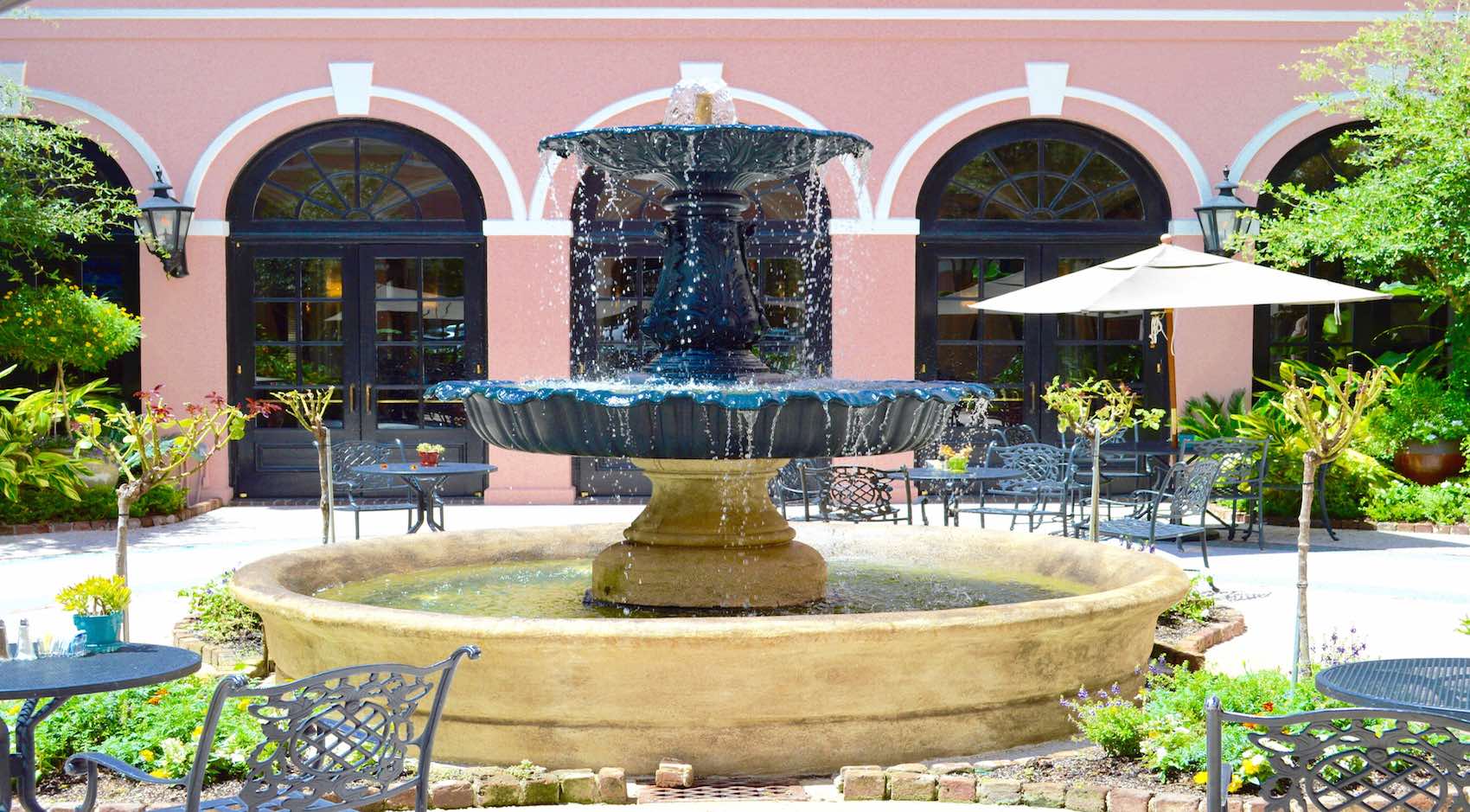 By Susan Sellers, Guest Contributor
By Susan Sellers, Guest Contributor
The property in Charleston, SC that is most famously known as the Mills House Hotel has had an interesting past: first as a stately home, then as a boarding house, afterwards a hotel for country planters visiting the city, and then in 1853 the structure was completely rebuilt, as one of the grandest hotels in Charleston. For the last 40 years, an elegant cast iron fountain has been the centerpiece of the hotel’s charming courtyard.
With an esteemed address at the corner of Meeting and Queen Streets, the original Mills House Hotel was named for its owner; wholesale grain merchant Otis Mills (1794-1869). Designed by architect John E. Earle and built by contractors James P. Earle and R. Earle at an estimated cost of $200,000, the five-story building had an iron balcony across the façade, ornate terra-cotta cornices above the windows, and an arcaded entryway. A few weeks before the hotel opened, a reporter for the Charleston Courier visited the new building. The resulting article, a feature-by-feature tour, ran to nearly a full page, the reporter being overwhelmed in equal measure by the Mills House’s grand scale and by its modern equipment. Much of the architectural trim was imported: the ironwork, marble mantels, and chandeliers from Philadelphia; stoves and furnaces from New York, furniture from Boston. However, the stone and marble work for pavement and exterior steps were locally supplied by W. B. White. The hotel boasted a dining saloon, a gentlemen’s dining room, a second-floor ladies “ordinary ” with tables for 160, and 180 guest rooms. Gas lighting illuminated every room, and on each floor were eight “bathing rooms ” for ladies; similar rooms for gentlemen were found on the first floor. Water for the baths, steam heating system, and in-house laundry would be supplied by wells and cisterns on the property.
In the 1920’s the hotel was sold and even though Charleston’s growing tourism industry assured the Mills House’s survival into the 1960s, revenues did not provide for modernization or even routine upkeep. The dilapidated structure was sold at public auction in 1968. The buyers, Charleston Associates (Richard H. Jenrette, Charles D. Ravenel, and Charles H. P. Duell) planned to rehabilitate the historic building. Unfortunately, renovation of the Mills House proved infeasible, and the owners decided to demolish it and replace it with a close replica (a notable difference being the increase from five stories to seven). Architects Curtis and Davis of New York designed the hotel, Ruscon Construction Company was the general contractor, and local architects Simons, Lapham, Mitchell and Small consulted on exterior design and historic detail. Under their supervision, the original iron balcony was salvaged for re-installation on the new structure, and elements of the original terra-cotta window pediments were stored in the basement of Hibernian Hall so reproductions could be cast. The modern Mills House Hotel registered its first guests on October 9, 1970.
It was during this time that a glorious cast iron fountain was created and purchased in New Orleans for the freshly built Mills House for $15,000 and transported to Charleston. It would be installed in the hotel courtyard which was designed by Loutrell Briggs, a well- known landscape architect who designed a great number of gardens in Charleston. However, after over 40 years of exposure to the elements, the old fountain called for restoration. Cue John Williams, owner of Water Features Unlimited, and also the in-house architect for Luxury Simplified Construction, known in downtown Charleston as the leading firm for historic restoration and the recent recipient of Historic Charleston Foundation’s prestigious Whitelaw Award for Preservation. John’s team was awarded the contract from the owners, Wyndham Hotels, to restore the fountain and the plaza.
When John and his team started the restoration work, the fountain was encased in rust, and the four medallions were down to two. They were able to obtain new cast iron medallions from Robinson Iron Works in Georgia who had the original molds. The team cleaned the fountain and piazza using glass beads under pressure, versus sand blasting. This method is approved by historic preservationists. They re-stuccoed the concrete basin which was badly cracked, and painted the cast iron fountain “Charleston Green “. As a final touch, they applied a waterproof coating to the interior of the basin and installed new LED lights, finishing just in time for an August wedding!
*Special thanks to the following companies for their invaluable help with the restoration of the Mills House fountain: C&S Caulking, Charleston Cobble, Robinson Iron Works, Roman Fountains
*Portions of this article were taken from historic accounts compiled by the Preservation Society of Charleston.
Interested in Learning More?
Our expert teams - from development, investment, real estate, and property management - have experienced it all and have the insight to help you along the way.
Find Out More